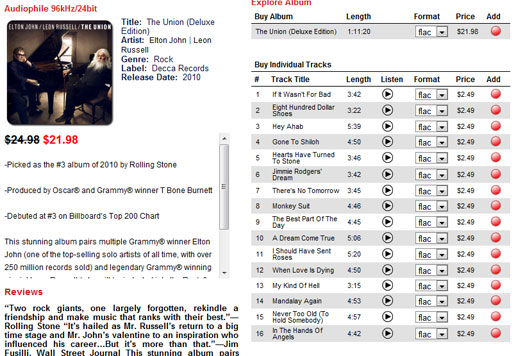Are 24-Bit Downloads Good for Digital Music? Page 2

(Above: HD Tracks)
DO MORE BITS MATTER?
The question of whether better-than-CD word depths and sampling rates deliver an audible improvement has spawned debate for more than a decade.
Let's start with the word depth argument. It would seem that some increase in dynamic range beyond 96 dB might be of benefit. The human ear can hear sound-pressure levels as low as 1 dB. A properly calibrated home theater system will deliver SPL of 105 dB from each channel when measured in your favorite listening chair. Add, say, +6 dB of headroom to avoid distortion, and you need at least 19 bits Here's the rub, though: A typical good home theater might have an ambient noise level of 40 to 45 dB SPL. Your ability to hear sounds below that is negligible, so to get up to 105 dB SPL plus some headroom, a dynamic range of 80 dB would be generous. Of course, the ambient noise level for mobile listening could be even higher, although negated somewhat by passive and active noise-reduction technologies.
Plus, there's lots of ambient and electrical noise in any recording made with a microphone; a good recording studio might get down to an ambient noise level of 30 dB SPL. As an engineer I worked with at Dolby once commented, "You only need 144 dB of dynamic range if you record in an anechoic chamber with cryogenically frozen microphones."
On the other hand, audiophiles would argue that any increase in resolution gets you that much closer to real analog sound.
The technical case for higher sampling rates is better. While humans can't readily detect sounds above 20 kHz (and that threshold drops for males and those of middle age and older), various studies have indicated that the ear and brain do respond in some way to higher-frequency sounds. This paper from the CalTech Music Lab makes a pretty good case.




























































